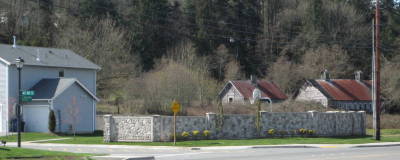
Racing past old Elliott Farm
As much fun as bicycling is for me, I feel like I'm pedalling into a rut sometimes by going over the same old bike routes.
It occurred to me that perhaps if I look more closely at the roadside scenery and delve into the history of the places I'm passing, maybe it will give me a new perspective and freshen up my rides.
Take these old farm buildings for instance. I must have passed these more than 100 times on rides I've taken out or back the Cedar River Trail in Renton. They might look like run down, abanonded farm buildings, but they are something more.
Museum
I stopped in at the Renton History Museum on my ride home and found out that it's the old Elliott Dairy Farm, a designated landmark by the King County (Washington) Landmarks Commission.
Most of the buildings, including these still standing, were built in 1909 or 1910 by R.J. Elliott, a Canadian carpenter who had settled earlier in the Seattle area. It was home to three generations of his family. The last dairy herd was sold in 1968 and beef were fattened on the farm until it was sold to developers in 1981.
When Elliott started work, this part of the Cedar River Valley was transforming from subsistence farming to dairy. Still, the Elliott farm was considered one of the most technologically advanced for its time.
Conveniences
For instance, the concrete floors and lower walls made for easier cleaning, and he installed flyproof ventilators and running water. Soon he built an electricity generator on a spring behind the house.
The family shipped the milk to Seattle bottlers until the Great Depression, when they started their own bottling operation and delivered to homes in Renton.
In 1911 the carpenter turned dairyman built a 2-1/2 story home on the property, which was featured in a spread in the Seattle Times.
Today
 That house can barely be seen from the bike trail along Maple Valley Road now. All the windows are broken out. The main milking barn and other buildings are deteriorating. The land is all overgrown.
That house can barely be seen from the bike trail along Maple Valley Road now. All the windows are broken out. The main milking barn and other buildings are deteriorating. The land is all overgrown.
Robert Hunt, president of the Renton Historical Society, writes in an October 2006 newsletter (.pdf file) that although the structures are protected, their preservation is another matter. The buildings would have to be acquired from their owner and rehabilitating them could cost $2 million.
Imagine all that went on at the farm for the past 100 years. Until this week, it was just a curious collection of rundown farm buildings surrounded by modern development. Now I have a new perspective about where I'm riding.
I'll be digging a little deeper into the history on my rides over the next few months and sharing it.

Recent Comments